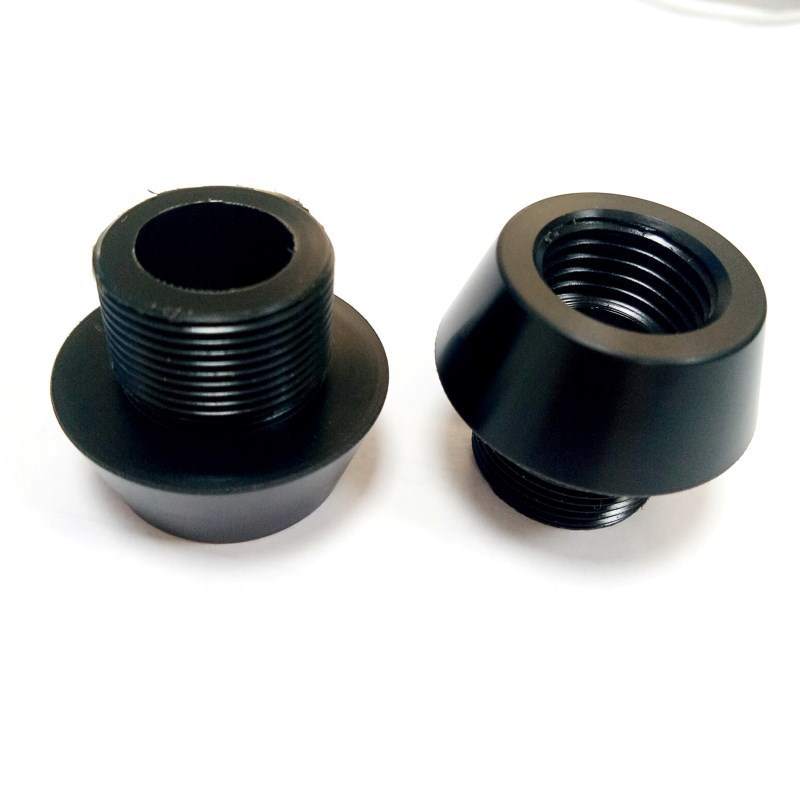Machined Plastic Parts
Machined Plastic Parts
Blog Article
Machined Plastic Parts are precision plastic parts that are cut from raw Materials such as plastic rods, plates or tubes by CNC Machining (such as CNC Turning, milling, drilling, etc.). Compared with injection molding or forming, these parts do not require molds and are suitable for small-batch customization, prototype proofing, functional parts or structural parts manufacturing, with high precision, high flexibility and excellent surface treatment effects.

Applications:
Industrial equipment parts: such as transmission parts, guide rails, gaskets, covers, brackets, etc.
Electronic and electrical fields: non-conductive parts such as insulating housings, brackets, cable clamps, etc.
Medical devices: customized fixtures, surgical auxiliary parts, fluid interfaces, etc., especially for parts requiring high cleanliness.
Aerospace: lightweight structural parts, insulating brackets, non-metallic mounting parts, etc.
Semiconductor and optical Industries: such as high-precision positioning fixtures, lens holders, instrument components, etc.
Automotive industry: used for functional testing, prototype verification or electrical component brackets, etc.
Food processing and packaging: contact surface parts, conveyor rails, etc., which need to be hygienic and corrosion-resistant.
Material:
POM (polyoxymethylene): high mechanical strength, wear resistance, low friction coefficient, suitable for gears, sliders, etc.
PTFE (polytetrafluoroethylene): extremely strong chemical resistance, widely used in seals and fluid system components.
PEEK (polyetheretherketone): high temperature and high strength performance, suitable for aviation and medical high-demand fields.
PC (polycarbonate): impact resistance, good transparency, often used in protective covers, detection devices, etc.
Nylon (nylon): flexible and wear-resistant, used for pulleys, bushings, brackets, etc.
PVC (polyvinyl chloride): strong electrical insulation, suitable for electrical accessories.
HDPE/PP: corrosion resistance, lightweight, suitable for food and chemical processing industries.
ABS: good formability and processability, suitable for functional parts and housings.
Features:
No need to open mold: suitable for single-piece proofing or small batch customization, saving mold cost and time.
High dimensional accuracy: CNC processing accuracy can reach ±0.01mm, suitable for strict matching parts.
Diverse material selection: Plastics with different properties such as strength, wear resistance, and corrosion resistance can be selected according to functional requirements.
Strong processing flexibility: Suitable for the manufacture of complex structures, special-shaped parts or tiny parts.
Excellent surface quality: Smooth and burr-free surface effects can be achieved through fine processing.
Suitable for fast delivery: Especially in the prototype development and testing stage, it can respond quickly to design changes.
Advantages:
Convenient design modification: Since no mold is required, the processing path can be quickly adjusted and remade after the design is changed.
High cost performance: For small-scale production needs, the unit price of CNC processing is high, but the overall cost is lower than injection molding.
Suitable for high-performance materials: CNC processing can be easily achieved for engineering plastics that are difficult to injection mold, such as PEEK and PTFE.
Pollution-free process: The processing process does not involve high-temperature molding agents or solvents, and is more suitable for clean environments.
Wide applicability: The structural size can range from a few millimeters to hundreds of millimeters, covering multiple industries from electronics to machinery.
Good stability: The geometric shape of the processed parts is stable, suitable for precision assembly.
Environmental protection and energy saving: Plastic waste can be recycled or reused to reduce waste.
FAQ:
What is the difference between machined plastic parts and injection molded parts?
Injection molded parts are suitable for mass production, with large initial mold investment, but low unit cost; while machined plastic parts are suitable for proofing and small batch processing, without molds, can be produced quickly, and are suitable for design verification and personalized customization scenarios.
Is it easy to deform when processing plastics?
Plastics expand greatly after heating. If the clamping is improper or the parameters are unreasonable during processing, warping or internal stress may indeed occur. Deformation can be effectively controlled by optimizing tool paths, reducing feed speeds and selecting fixtures reasonably.
Are all plastics suitable for machining?
Not all plastics are suitable for machining. Thermosetting plastics are not suitable for turning due to their hardness and brittleness, while soft materials such as PE and PP require special tools and fixtures to control elastic recovery. Engineering plastics such as POM and PEEK are very suitable for precision machining.
Can the surface be treated secondary?
Yes. After the processing of machined plastic parts, polishing, sandblasting, silk screen printing, bonding, surface coating or hot melt edge sealing can be carried out to meet special requirements for appearance or function.
Is the accuracy of machined plastic parts reliable?
High-precision CNC equipment can achieve a processing accuracy of ±0.01mm. Especially when used in medical equipment, precision electronics and other fields, dimensional stability and assembly compatibility can be ensured through reasonable processes and inspection processes.